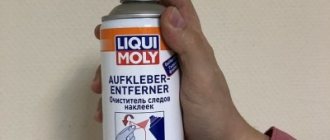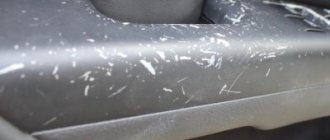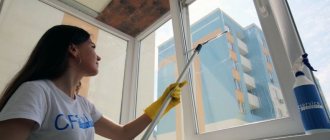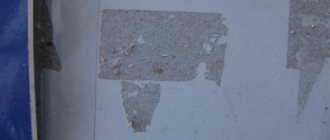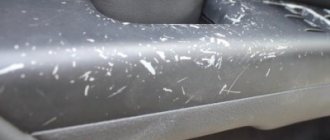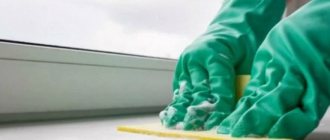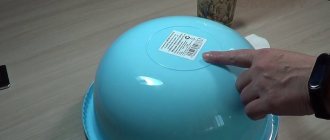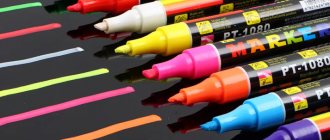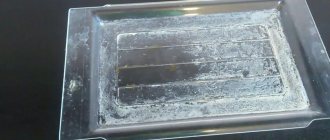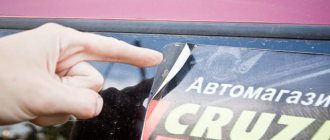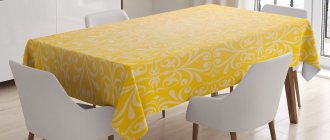If you are a member of the community of retro gamers or retro computer enthusiasts, then you probably have vintage devices that have faded and began to turn yellow under the yoke of age. You may also have heard about the Retr0bright technique or even watched various videos from the 8-bit Guy on this topic. But the essence still remains hidden for most people. Why does plastic turn yellow, and what exactly happens during the Retr0bright process? And in general, is it safe to use this technique for collectible items?
Translator's note:
the possibility of bleaching yellowed plastic products with a solution of hydrogen peroxide was accidentally discovered at the German CBM Museum in 2008. Subsequently, based on this discovery, British chemists developed a more effective whitening composition, the original recipe of which is given at the end of the article along with a link to the source and additional information.
I consulted Professor James E. Pickett, a chemist working in the field of polymer degradation, who provided me with chemical reaction schemes. To understand the Retr0bright process, you first need to understand exactly how plastic breaks down and why it turns yellow. If the chemical background does not interest you, then you can immediately turn to the conclusions in the final part.
Part I. Malicious butadiene
The plastic most often used in the production of old computers was ABS, which is known for its tendency to yellow over just a few years.
Most plastics, including ABS, degrade when exposed to heat and light in the presence of oxygen. This effect is called thermal oxidation and photo-oxidation, respectively. Therefore, it is recommended to store plastic products in a cool, dark place. But this is not a salvation, and later I will explain why. ABS plastic is made up of three main components: acrylonitrile, butadiene and styrene (see Figure 1). We are interested in butadiene and styrene, since acrylonitrile does not actively participate in yellowing or the Retr0bright process.
Rice.
1. Basic structure of ABS. The hexagon is a benzene molecule. Source: [1] In the presence of heat or high-energy light, oxygen molecules attack ABS plastic.
This process is shown in Fig. 2 below. Fig.2 Oxidation of the butadiene molecule.
The wavy lines indicate the rest of the chain. From carbon atoms located next to double bonds, hydrogen is separated more easily, so oxygen penetrates here [8].
As a result, an unstable chemical compound, hydroperoxide, is formed (also shown in Fig. 2). One of the oxygen atoms in the hydroperoxide molecule decides that it is too crowded here and pushes out the neighboring oxygen and hydrogen atoms (Fig. 3). Fig.3
The freed -OH group is called a radical. At the moment, he is not tied to anything and is in free flight - a free radical. Further, to find shelter, it acts as a parasite in the styrene group [5,7]. This long, malicious process of introduction into a poor styrene molecule occurs in several stages, which are shown in Fig. 4.
Fig. 4
After the introduction of the radical, the styrene group is cleaved, forming a nondescript yellow compound called 2-hydroxymuconic acid or simply muconic acid. The yellow color is formed due to the so-called conjugation bonds. A conjugated system is any material with an alternating set of single and double bonds (Fig. 5).
Rice.
5. Pairing example. Conjugated bonds are highlighted in red. Source: [3] In Fig. 4 we see that in muconic acid many double bonds alternate with single ones. Without conjugation, the chemical component does not absorb visible light well enough and appears white to us because all colors are reflected. If conjugation is present, then the chemical component absorbs several colors of the visible spectrum. In the case we are considering, muconic acid absorbs blue and violet light, reflecting the yellow and red spectrum, which presents this nondescript shade of yellow to our eyes. But that's not all!
Recommendations
The following tips from cleaning experts will help you cope better with the task:
- Before you begin bleaching, the surface must be prepared - remove dust and dirt.
- All work should be carried out wearing rubber gloves to protect your hands.
- It is necessary to consider what kind of plastic will be processed. For some types of products, special products are produced marked “for refrigerators”, “for microwaves”, etc.
- After cleaning is completed, the plastic surface should be wiped dry.
- When treating plastic against yellowing with vinegar essence, alcohol, Dimexide and other substances, you must remember that if the cleaning agent gets on areas with inscriptions, they can also be erased.
- To clean small plastic items, it is convenient to use an old toothbrush.
The most complete and useful information about methods and means of removing yellow spots and yellowness from various surfaces and products is presented in this section.
Part II. Transformers
Muconic acid molecules are like insidious shape-shifting Decepticons.
They can exist in many forms, but for this process the two most important are the cis, cis form and the trans, trans form (Fig. 5). Rice. 6. Two forms of muconic acid: cis, cis-on the left and trans, trans-on the right
As you may remember from your biology curriculum, the cis and trans forms are isomers of each other. This means that they have the same chemical formula but different structures. Under certain conditions, muconic acid isomers can change from one form to another. This is very important, since the trans forms are more thermally stable and participate more actively in the yellowing process [4,7].
The tendency of muconic acid to change shape causes the plastic to gradually turn yellow, even in dark places. For example, a plastic box under the bed or a container in the closet. To reverse this yellowing process, you can simply place such a container on a sunny windowsill for a few hours. In this case, it is advisable to protect it from direct rays with glass in order to exclude UV exposure, which will cause additional damage to the structure. The essence of this method is that sunlight promotes the active conversion of the trans form back to the cis form [6, 10].
How to prevent yellowness from appearing
So that you don’t have to rack your brains over how to remove an unwanted tint from household utensils and appliances, simply prevent it from appearing. Moreover, it is not so difficult to do this.
- Periodically (at least once a week) wash all surfaces with water and soap or dish detergent.
- It’s even better if you clean white items with special compounds: this way the problem of discoloration will not affect you for a long time.
- Limit the amount of bright sunlight entering the room to protect objects from UV light coming from outside.
- You should not smoke in the room.
- Install a hood to remove excess grease and soot, as well as an air conditioner to regulate the temperature in the room.
- Choose double-glazed windows from good manufacturers.
As you can see, the rules are very simple, and most of them do not require much effort or expense. The last two points, of course, are quite problematic to change in an already furnished apartment, but if you are at the stage of renovation or planning one, then take care of the quality of windows and installation of equipment in advance.
Part III. Nintendo history?
The question has been raised in the retro computer community about whether flame retardants, particularly BFRs (brominated flame retardants), cause yellowing.
There is a possibility that this assumption originated at Nintendo, but I was unable to confirm this. The short answer is, “Yes, BFRs cause yellowing.” Brominated flame retardants can be cleaved to form conjugated chains with double bonds that are involved in the yellowing process. However, the amount of BFR relative to the total volume of plastic is small and the effect is therefore very small.
Rice.
7. Example of brominated flame retardant and its structure But BFRs can cause yellowing through another mechanism. Similar to butadiene, BFRs are also attacked by oxygen to produce free radicals, which then attack the styrene chains, causing the breakdown of styrene. This confirms that BFRs contribute to yellowing, but not in the way many assume.
Perhydrol
This product can be found in almost any pharmacy. Use perhydrol carefully and ensure that it does not heat up. Soak a sponge in perhydrol and wipe the plastic surface 3-4 times. Be sure to rinse the plastic with water afterwards!
For the best effect, mix perhydrol with stain remover and a liter of water.
Part IV. Loss of strength and brittleness
UV light weakens ABS and other similar types of plastic, as stated in many scientific works [5,8,9]. Oxidation and destruction of butadiene groups plays a major role in this process, and oxidation of styrene contributes to even greater weakening. Butadiene groups undergo two processes: cross-conjugation and scission [2]. Breaking is the direct separation of the butadiene bond - like cutting a string - which naturally weakens the strength of the plastic. Cross-conjugation (Figure 6) increases the molecular density and rigidity of the plastic because it bonds the butadiene groups together. This, in turn, makes the plastic more fragile, which is used intentionally in some other varieties [8]. Oddly enough, such hard plastic is also fragile and breaks easily. (ABS assumes a certain flexibility, which, like rubber, is given by butadiene).
Rice.
8 Cross-conjugation of butadiene groups In Fig. Figure 8 shows three series of different cross-coupling reactions. The same thing happens in all of them: the binding of butadiene groups.
The good news is that only the top layers of plastic should be damaged by UV light. The inner layers remain unaffected, unless technological errors were made during the production of plastic. In this case, the oxidation process can spread everywhere.
Alcohols
Plastic usually does not react to alcohols and alcohol solutions, so they can be safely used for bleaching. To do this, put on rubber gloves, pour a little alcohol onto a cotton pad, and walk over the yellowed surface.
After treatment, it is not necessary to wash off the alcohol, but it is recommended to ventilate the room.
Part V. Retrobright
I think many of you are already waiting for the most important thing - a description of the Retr0bright technique.
I won’t languish any longer. There are many examples online of bleaching plastic using hydrogen peroxide and heat or UV light, and sometimes ozone. If you know how oxidizing agents and peroxide work (hint: they add oxygen), you might be thinking, “Wait a minute! The Retr0bright procedure is eerily similar to the process of breaking down plastic - it causes oxidation!” You are absolutely right, but that's not all. The Retr0bright technique involves an additional oxidation step. Contrary to popular belief, Retr0bright does not correct plastic, but simply whitens it. There is even a video where plastic is bleached using chlorine. Just don't try to repeat this at home!
The action of most bleaches involves attacking double bonds and their oxidation to single ones [3]. In Fig. Figure 9 shows how this happens.
Rice.
9. This is how bleach works, in this case chlorine. Source: [3] Here, double bonds are “stolen” by -OH groups (oxygen and hydrogen) and -Cl groups (chlorine). The same principle can be applied to our culprit of all the action: muconic acid. This way we will understand how Retr0bright helps to whiten it: it removes yellowing-causing double bonds by oxidizing them and simplifying them to single bonds. In this case, only -OH groups are involved in the Retr0bright process, because chlorine does not contain hydrogen peroxide. However, the overall chemical reaction is not entirely clear, since peroxide can break down muconic acid into several smaller chemical compounds.
Another hotly debated question is: “Is it worth using Retr0bright at all?” Many have repeatedly written on forums that Retr0bright makes plastic more fragile. I note that its composition should only affect the top layer of ABS plastic, that is, it will not cause much harm to undamaged plastic. But if there are cracks or chips, peroxide can get into them and cause internal damage to the plastic structure. This means that using Retr0bright on a material with poor surface integrity will only make the situation worse.
How to remove yellow spots with special means?
Special products that will help clean plastic and restore lost color are effective in most cases. A common disadvantage of such drugs is their high cost.
To clean plastic, you can only use special products that are designed to handle this type of material. This is usually indicated right on the label.
Mellerud for plastic products
Mellerud is a product that removes various types of contaminants from plastic products. This drug can be used to tidy up:
- plastic frames;
- kitchen furniture;
- ceiling panels;
- car interior;
- window sills;
- wall panels, etc.
Mellerud is available in liquid form. It contains up to 5% nonionic surfactants. The price of a 0.5 liter bottle is about 360 rubles.
HG intensive plastic cleaner
TM HG product is intended for cleaning painted walls, wallpaper and plastic . It contains up to 5% surfactants and nonionic surfactants. When used, the drug is sprayed onto the stained area and manual cleaning is carried out.
The drug does not require additional rinsing. This product is biodegradable. The average price is 380 rubles per 0.5 liter bottle.
Nordland
The product is available in liquid form and is intended for cleaning plastic products. This product is biodegradable, which allows you to properly care for plastic products without harming the environment.
The active spray is suitable for caring for all types of plastic and has good cleaning ability. The drug is applied by spraying onto the treated area. The average price is 400 rubles per bottle.
Recipe Retr0bright
WARNING!!!
Please note that hydrogen peroxide is a corrosive agent and, if handled carelessly, can cause serious chemical burns to the skin, as well as blinding if it gets into the eyes. If you decide to do this experiment, it is highly recommended to use glasses and gloves.
Merlin's original recipe
To prepare the magic mixture “Retr0bright” you will need:
- 500 ml of hydrogen peroxide with a concentration of 10 to 15%;
- 2 heaped tablespoons xanthan gum (available in health food stores and online);
- 1 teaspoon glycerin (sold at the pharmacy);
- 1/4 teaspoon Oxy laundry booster.
Add the hydrogen peroxide and gum to the blender and blend on high speed for 5 seconds. Add glycerin and stir for another 5 seconds. Let the mixture sit for about a minute, then stir again for 5 seconds. The result should be a thick gel that can be placed in a dark container (such as a coffee can covered with dark film) for storage. Just DO NOT add Oxy until you are ready to use this gel.
To use the mixture, mix the final component into it and apply it to the part, then place the part in sunlight for several hours. This procedure can be repeated.
Here is the experimental result of whitening a Commodore 64. The process was carried out in several stages and took a total of 8 hours:
Translator's note:
The original recipe is described here, for which there are two alternative options given on the main site. The authors separately warn that the responsibility for using your own ingredients and introducing technological improvements to the process falls entirely on you.
PS from the editors of RUVDS
This article came to us in an unusual way, and one might even say that it found us on its own.
When translating a series of two articles (Restoring and Upgrading the BBC Micro and Upgrading the BBC Master) dedicated to the restoration of retro electronics, we contacted the author and asked him some questions, including from user comments. In response to one of these comments, the author kindly sent us a pdf file with the original article that you read today. And since many are interested not so much in the chemical background of all these processes, but in the recipe for the miracle cure itself, it was decided to refine and supplement the material. List of sources
[1] ABS suppliers. (2021). Acrylonitrile Butadiene Styrene; Chemical Retrieval on the Web. polymerdatabase.com/Polymer%20Brands/ASB.html [2] Adeniyi, J. B. (1984). Clarification and discussion of chemical transformations involved in thermal and photo-oxidative degradation of ABS. European Polymer Journal, 20(3), 291–299. doi.org/10.1016/0014-3057(84)90050-8 [3] Ashenhurst, J. (2016, September 8). Conjugation and color(+ how bleach works). Master Organic Chemistry. www.masterorganicchemistry.com/2016/09/08/conjugation_and_color [4] Khalil, I., Quintens, G., Junkers, T., & Dusselier, M. (2020). Muconic acid isomers as platform chemicals and monomers in the biobased economy. Green Chemistry, 22(5), 1517–1541. doi.org/10.1039/C9GC04161C [5] Kulich, D. M., & Gaggar, S. K. (1996). Weathering of acrylonitrile-butadiene-styrene plastics: Compositional effects on impact and color. In Polymer Durability (Vol. 249, pp. 483–501). American Chemical Society. doi.org/10.1021/ba-1996-0249.ch031 [6] Pickett, J. E. (2004). Reversible post-exposure yellowing of weathered polymers. Polymer Degradation and Stability, 85(1), 681–687. doi.org/10.1016/j.polymdegradstab.2004.03.008 [7] Searle, N. D., Maecker, N. L., & Crewdson, L. F. E. (1989). Wavelength sensitivity of acrylonitrile–butadiene–styrene. Journal of Polymer Science Part A: Polymer Chemistry, 27(4), 1341–1357. doi.org/10.1002/pola.1989.080270418 [8] Tiganis, B. E., Burn, L. S., Davis, P., & Hill, A. J. (2002). Thermal degradation of acrylonitrile–butadiene–styrene (Abs) blends. Polymer Degradation and Stability, 76(3), 425–434. doi.org/10.1016/S0141-3910(02)00045-9 [9] Tiganis, B., Davis, P., Burn, L., & Gotama, J. (2002). The Mechanism Of Photo-Oxidative Degradation Of Acrylonitrile-Butadiene-Styrene (Abs) Resins Used In Pipes. www.irbnet.de/daten/iconda/CIB9222.pdf [10] Wyzgoski, M. G. (1976). Effects of oven aging on ABS, poly(Acrylonitrile-butadiene-styrene). Polymer Engineering & Science, 16(4), 265–269. doi.org/10.1002/pen.760160408
Main types of pollution
Containers are used for long-term storage or convenient transportation of ready-made food and individual products. Many people like to take plastic dishes outdoors, which makes the process of serving and cleaning much more convenient. The following types of contamination are typical for such products:
- from fatty foods, sauces, meat products;
- unpleasant odor after fish dishes;
- remnants of tape or glue from the price tag or other stickers.
Thus, plastic containers may simply be dirty, emit unpleasant odors, or become colonized with dangerous bacteria (if raw meat was placed in a plastic food container to marinate). It is important to understand how to most effectively get rid of each type of contaminant.
How to wash plastic panels in the bathroom?
The bathroom is a room with high humidity, where limescale, mold, rust, and fungal microorganisms often accumulate. Therefore, it requires regular cleaning and ventilation to avoid these troubles. You should also check the plumbing and pipes to replace them if necessary. Rusty pipes are the main cause of fungal formations, mold and yellow discoloration.
It is recommended to wash plastic walls in the bathroom with cleaners in the form of gel, cream, or paste. Cleaning should be done with soft sponges (acrylic, foam rubber) and cotton cloths. Mold can be easily washed off with chlorine-containing liquids. Bleach works great for removing rust. Residue from tobacco smoke, dirty splashes can be washed off with a simple soapy liquid. To prevent complex stains, it is important to regularly care for plastic. You can wipe it with ammonia or soda paste twice a month. After treating plastic materials with detergents, they should be thoroughly wiped dry.
Chlorine bleaches or stain removers
Any chlorine-containing detergents will help whiten plastic surfaces. | Photo: tutknow.ru.
Such products must be used very carefully and carefully (remember personal protective equipment and try to avoid inhaling vapors). Naturally, we do not take pure bleach or white, but chlorine-containing bleaches or stain removers at the rate of 1 tablespoon per 1 liter of water. Soak the plastic elements in this solution for 10-12 hours, then rinse thoroughly and do not forget to wipe.
Traditional methods
Today, many methods have been developed to return plastic to its snow-white appearance without the use of chemical components.
What is used for this? It is recommended to use this:
- Laundry soap;
- Acetic acid;
- Hydrogen peroxide;
- Baking soda;
- Washing powder;
- Medical alcohol;
- Solvent;
- Tooth powder;
- Chlorine-containing compounds.
Acetone
Acetone can be used to clean yellowed plastic, but be careful. | Photo: ouborke.ru.
In this case, the most dangerous drug for your plastic is one that can dissolve some types of plastics. To avoid this kind of damage, soak a cotton pad in acetone and make a few strokes on a small area in an inconspicuous place with a quick movement; if everything works out, then with active movements from top to bottom, wipe the yellowed areas, and then rinse thoroughly with water. Just remember to ventilate and wear thick rubber gloves!
Soda Ash and Washing Powder
Washing powder and soda ash will help deal with yellowed plastic surfaces.
This way you can bleach small plastic items. To do this, you need to take 1 tablespoon of soda ash, the same amount of any washing powder, dissolve them in 1 liter of warm water. Soak yellowed objects in the resulting solution for 10-12 hours. After this, rub thoroughly with a sponge or napkin and wash under running water. If you need to increase the volume of water, then do not forget to maintain the proportion.
Benefits of laundry soap
This product has a pungent odor and a good cleansing effect. To do this, just use a small amount of soap, a soft sponge and warm water.
The alkaline composition of this product ensures the rapid destruction of fatty deposits and deep dirt and forms a protective film on the surface.
- To do this, it is enough to use 300 g of laundry soap and 5 liters of warm liquid.
- What composition can be used to clean kitchen furniture, window sills and plastic dishes.
- After soap treatment, it is recommended to wipe all surfaces with a damp cloth.
General information
Also, one of the most important qualities is safety, so they can be safely used in residential areas. The materials used for the manufacture of plastic panels undergo all necessary tests and have a quality certificate. Another important advantage is that plastic panels are moisture resistant and also resistant to various chemicals. Another plus is the huge range of colors of plastic panels.
Important: when choosing plastic panels, you need to know exactly where they will be mounted, because what is suitable for the kitchen is not suitable for the hallway. For example, matte panels are difficult to clean from greasy stains, so they are not suitable for a kitchen backsplash.
